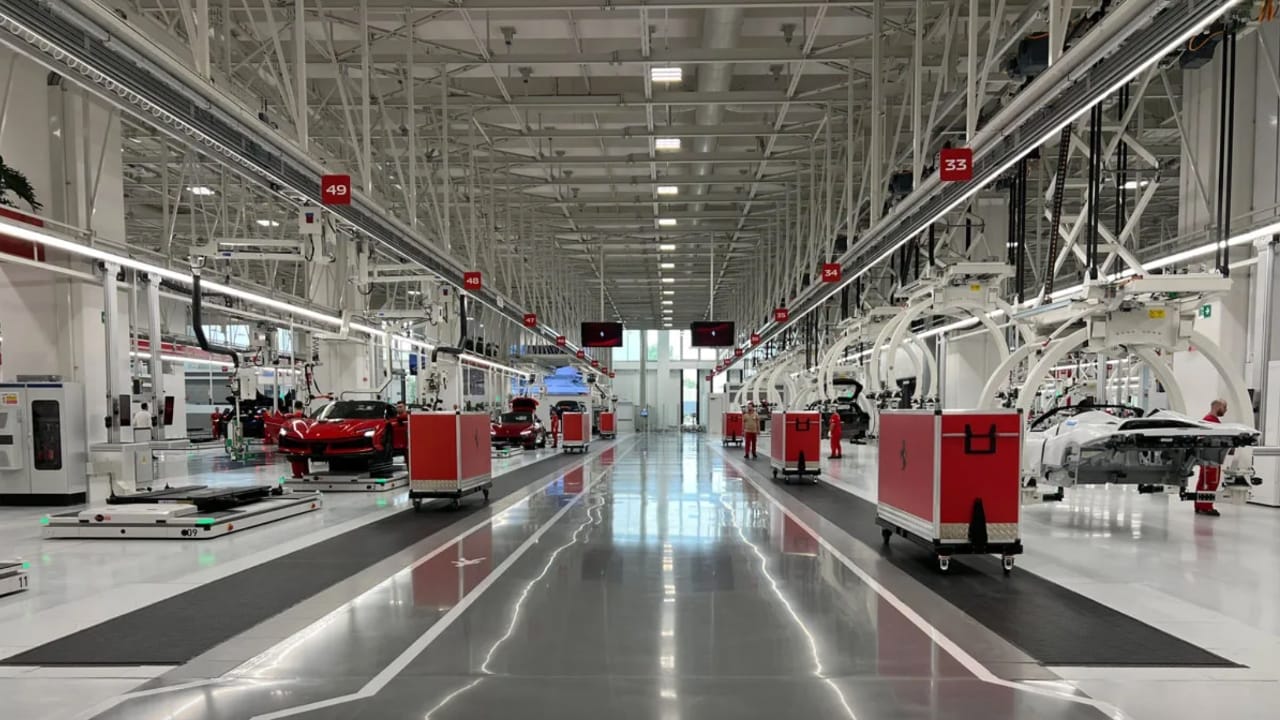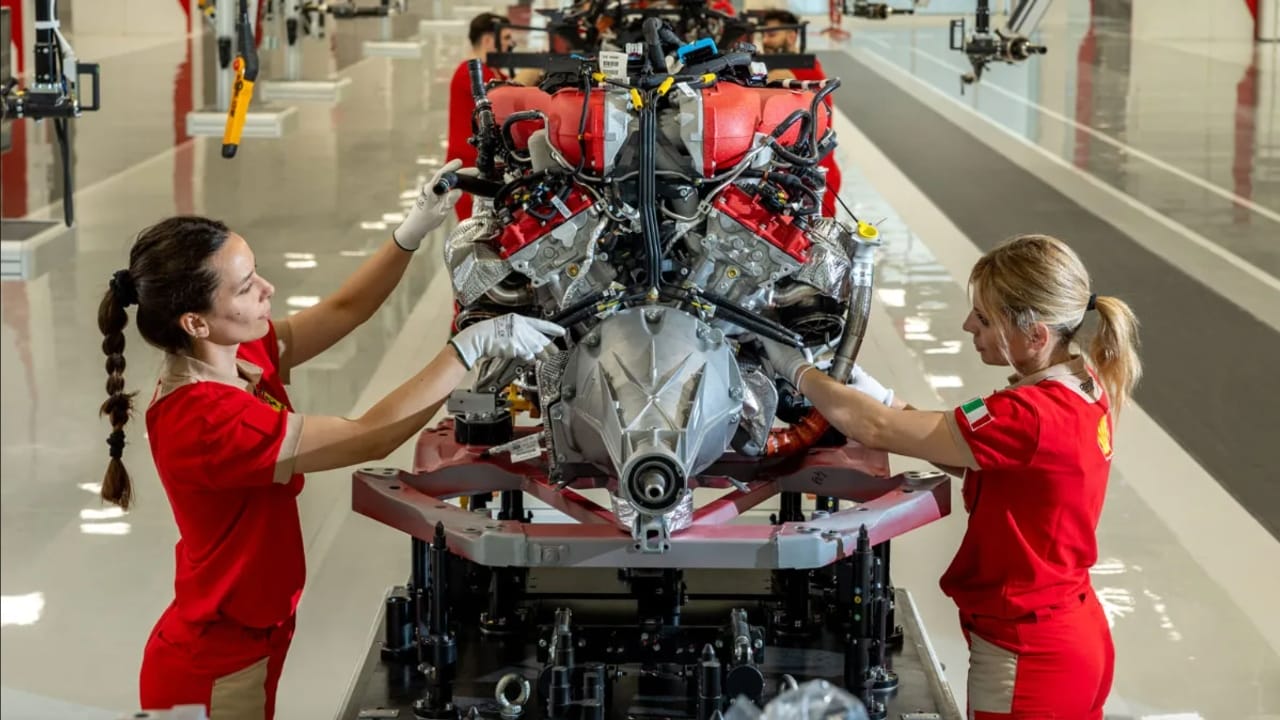Ferrari‘s storied factory in Maranello has seen its biggest expansion in a generation with the opening of its new “E-building,” a state-of-the-art assembly facility for the manufacture of the electric supercar that the marque will reveal late next year. Designed by Italian architect Mario Cucinella, it was completed in just two years at a cost of about $214 million. The E-building will also have the flexibility to assemble Ferraris with hybrid and conventional internal-combustion power trains, and will allow the automaker to construct its own electric motors and batteries for the first time.
The new addition could potentially increase Ferrari‘s production capacity from its current 14,000 cars per year to 20,000 or more, and free up space in the existing plant for more of the low-volume and highly personalized cars on which Ferrari makes high margins.

The E-building will initially be the site of production for the Purosangue SUV and SF90 hybrid hypercar early next year. These will be followed by the new Ferrari EV later in 2025, and possibly a second electric car which is rumored to be in development.
Enzo Ferrari had his first car emerge through the famous red-and-ochre gates of 4 Via Abetone in 1947, and he went on to establish a world-beating Formula 1 team and exclusive road-car marque from the original cluster of low factory buildings, many of which remain. The factory has expanded before, but this is the biggest increase in its footprint since 2002. Ferrari bought and demolished a block of obsolete industrial buildings to the north of what it now calls its “campus” to create the E-building, expanding its total footprint by around a quarter.

Production will take place on two floors, each finished almost entirely in white and flooded with light from glass walls with views to the rolling Emilian hills beyond. Self-driving “cobots” will pick up and move the cars between assembly stations, and workers will be able to raise, lower, or spin the car they’re working on to the ideal height and angle.
The significance of the new plant was reflected in those attending its opening. Ferrari CEO Benedetto Vigna was joined by the president of Italy, Sergio Mattarella, as well as John Elkann, the president of Ferrari and grandson of talismanic Fiat leader Gianni Agnelli (who bought Ferrari in 1969). Also on hand was Enzo’s son, Piero Ferrari, who is the company’s vice chairman.

Vigna repeatedly refused to put a number on the increased capacity the new factory brings, conscious that Ferraris need to remain a relative rarity to keep the marque’s pricing power high and protect residual values. But demand for the brand is so strong that even a 50 percent increase in production is unlikely to dent the model line’s appeal.
The shift to electric propulsion is riskier, however. Vigna was at pains to point out that Ferrari is about more than just a gas engine, and other senior executives have hinted recently that the new EV will echo the roar of the combustion-powered cars. Vigna reiterated Ferrari’s commitment to producing vehicles with all three types of propulsion, even beyond the looming bans on sales of purely combustion-powered cars in many of its major markets.

“A lot can happen in the decade before some of those bans come in,” Vigna said. “We have potential clients saying they won’t become Ferrari customers until we have an EV. We have customers saying they’ll never buy a Ferrari EV. And we have existing customers saying they’ll also buy an EV when we make one. So the best thing is to have the flexibility to quickly and nimbly adapt to a changing landscape. This new plant isn’t really about capacity: it’s about capability.”
Yet Vigna refused to be drawn on the details of the new Ferrari EV, saying that even the president of Italy wouldn’t get a preview. “He can ask, but he’ll get the same answer. The only thing we can say is that it will have four wheels and be a Ferrari.”




